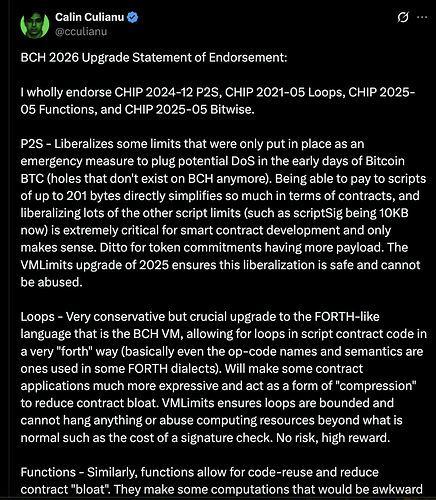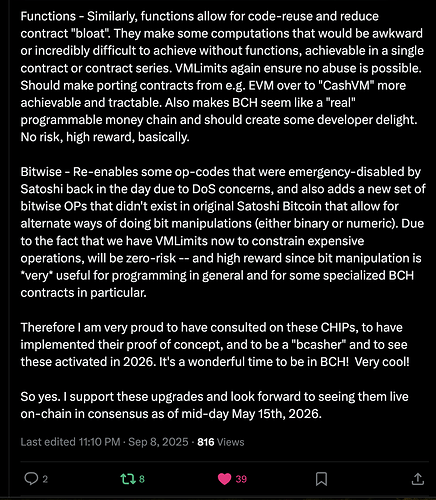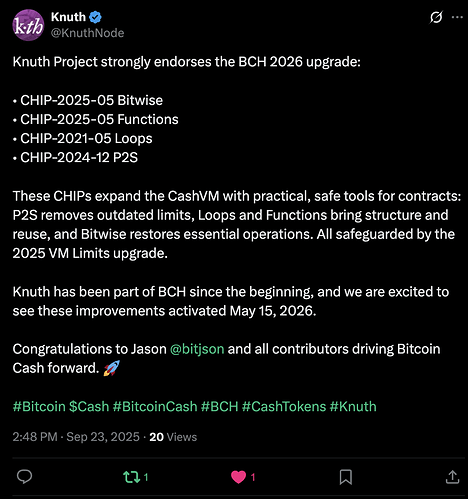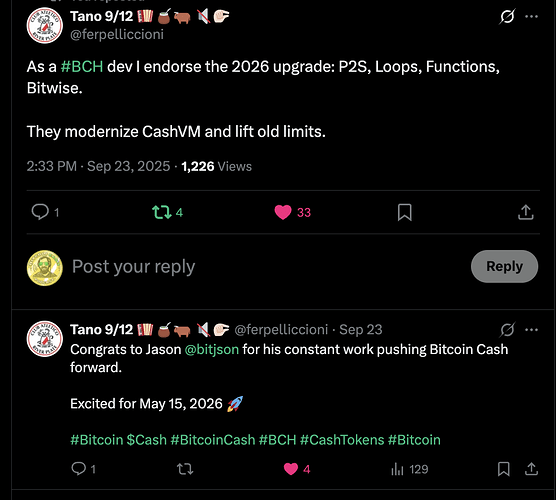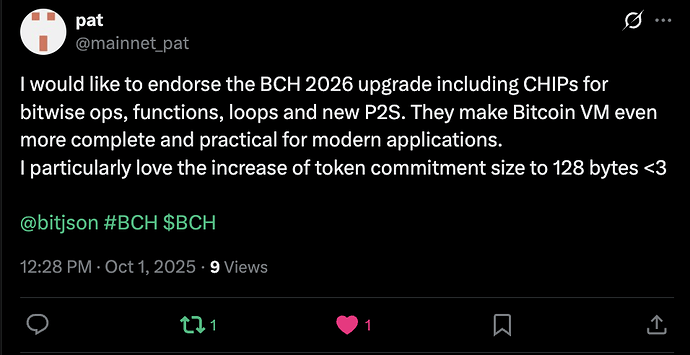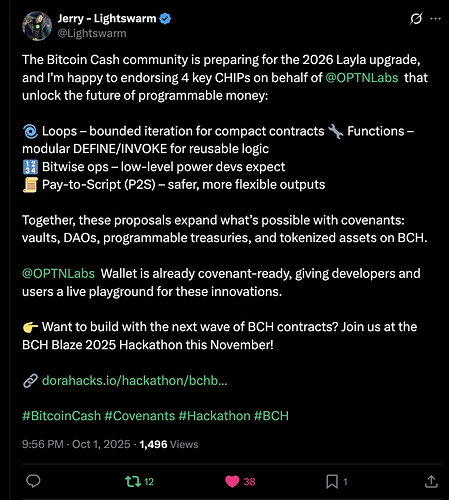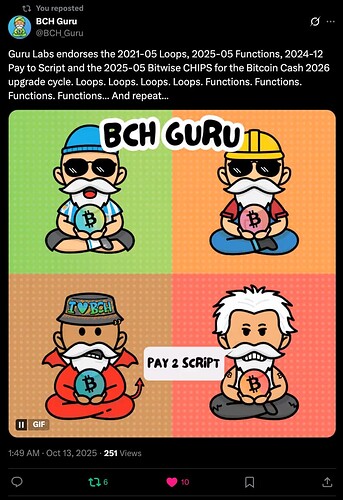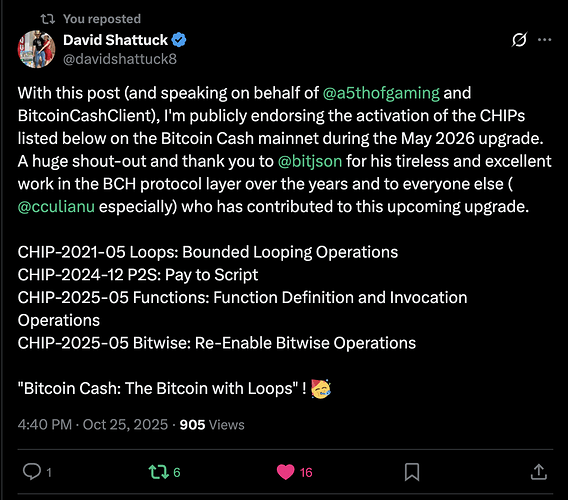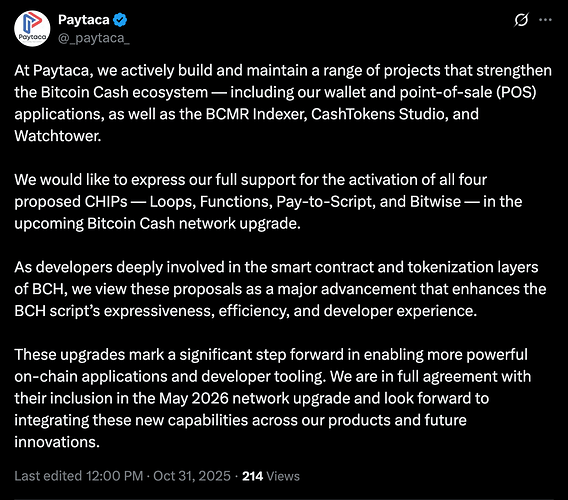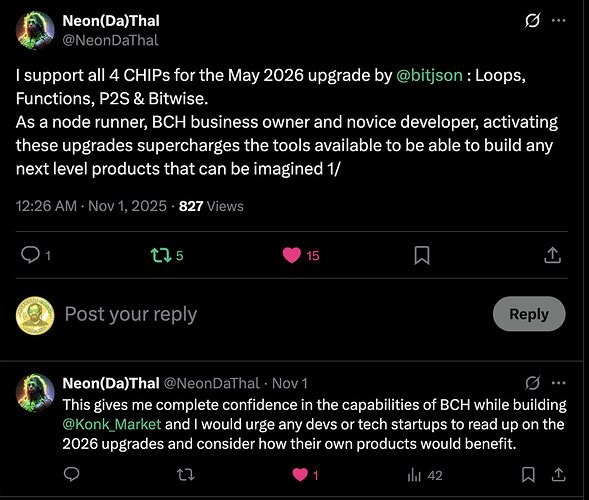What is the timeline for the lock-in process, and how long will endorsements remain open?
Lock-in happens on November 15th 2025. Activation is May 15th 2026.
For either a positive/negative/neutral endorsement to affect the consensus process, it effectively needs to be published before November 15th, and the earlier the better (gives time to discuss or react if you have any strong, valid objections or doubts).
Let’s go! Since everyone has defined the upcoming upgrades: P2S, Bitwise, Functions, and Bounded Loops. There’s no need to repeat them. I endorse all four CHIPs as well.
Thank you to all contributors and reviewers so far – I’ve frozen the Loops, Functions, P2S, and Bitwise CHIPs for lock-in, and stakeholder statements will be periodically updated through November 1. Final approval requests will go out in early October.
Please feel free to open issues in the repo for further comments, clarifications, or feedback, and please continue to publish and/or send pull requests with stakeholder statements.
These CHIP are integrated and live on the Sept. 15 public test network (tempnet) – please see that topic for details on how to setup a tempnet node and experiment with the upgrade 
I endorse “CHIP-2024-12 P2S: Pay to Script (c144f03f)” for 2026 lock-in.
The P2S CHIP relaxes some transaction standardness rules to align them with consensus. The VM Limits make sure that contracts still stay within compute bounds. It also increases the token commitment length somewhat. The CHIP has the effect of simplifying transaction validation and allowing larger contracts to be more conveniently expressed.
I endorse “CHIP-2025-05 Bitwise: Re-Enable Bitwise Operations (a432a19b)” for
2026 lock-in.
Adding the bitwise operations can be seen as an optimization of commonly occurring use cases. Such general optimization is a good idea as it can help reduce the need for tailor-made opcodes with more narrow use cases.
I haven’t yet implemented this CHIP in albaVm/albaDsl but plan to do so next and will come back if I have additional comments.
On behalf of myself (Kallisti.cash), Selene Wallet (selene.cash), bch.ninja, and xulu.tech, I fully endorse Functions, Loops, Bitwise, and P2S for the BCH 2026 Upgrade Cycle.
On behalf of myself, @zapit_io, @bitcann_org, and OpenCashDAO, I endorse the BCH 2026 Layla upgrade. Endorsement on X
BTW, how did we arrive at “Layla” this year? 
The general framework of course was:
- Female name, ending in “a”
- Something that captures the vibe of the upgrade somehow
A lot of people saw “Loops” as the “headliner” of the upgrade (especially at the point where functions was still in doubt), so names starting with “L” were discussed like “Lilia”, “Layla” or “Lola”.
I personally liked “Lilia”, a very pretty name and it has the “Li” repeated, but general discussion in a couple of Telegram groups & Twitter polls seemed to show a community response and preference for “Layla” - which then snowballed to be the name and now it’s just solidified haha.
I think it’s an excellent choice, because as well as meeting the criteria, “Layla” has a “loop like” repetition of “la”, and it has a “bitwise like” format of X_&_X (“y” is Spanish for &). So yeah that’s pretty much how it went.
Somebody coined “Layla” first, promoted it, became alpha on this topic and everybody else just followed.
The usual.

